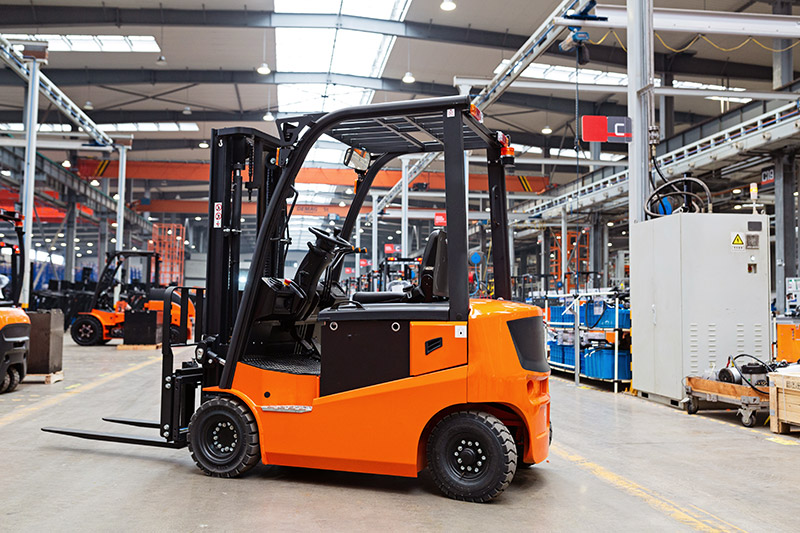Electric motors are the powerhouse behind many types of industrial equipment, from forklifts and tractors to heavy-duty machinery used in manufacturing and warehousing. While electric motors are known for their durability and efficiency, they require regular maintenance to keep them performing at optimal levels. When issues arise, understanding how to troubleshoot electric motors can prevent costly downtime and keep equipment running smoothly. This guide will walk through common motor issues, risks associated with incompatible coolant use, and best practices for maintaining coolant levels and ensuring motor longevity.
Electric motors in industrial equipment are subject to a variety of stresses. Factors such as load demand, environmental conditions, and even coolant quality can all impact motor performance. Coolant quality, in particular, plays a significant role. Contaminated or incompatible coolant can lead to overheating, reduced pump efficiency, and premature motor wear, ultimately affecting the equipment’s lifespan. Understanding these potential pitfalls is crucial for mechanics working to keep electric motors in top shape.
One common issue with electric motors is overheating, which can arise from blocked vents, excessive load, or poor coolant quality. Contaminated or degraded coolant may lead to increased friction and heat buildup within the motor, reducing efficiency and risking significant damage. Regular checks on coolant quality help prevent these issues. When inspecting a motor, look for signs such as discoloration, debris, or cloudiness in the coolant, as these can indicate contamination. Mechanics should always use the manufacturer-recommended coolant type to avoid chemical incompatibilities, which could cause the coolant to break down or corrode motor components. Over time, incompatible or low-quality coolants can erode internal parts, leading to frequent repairs and reduced motor life.
Vibration is another issue that can affect electric motors, often indicating problems with bearings or alignment. When a motor operates under constant vibration, it can lead to the loosening of internal components or even damage the motor’s structure. Inadequate lubrication is a common cause of bearing failure and increased vibration. While coolant primarily cools, it can also play a role in reducing friction when it’s maintained correctly. Low coolant levels, however, can increase the motor’s internal temperature, worsening vibration and causing further wear on moving parts. Mechanics should routinely check coolant levels and top them off as needed to maintain optimal motor health.
A properly maintained motor coolant system is critical for ensuring efficient operation. Coolant not only helps manage temperature but also provides a layer of protection for the motor’s seals and other critical components. However, contaminated coolant can clog cooling channels, reducing the system’s ability to dissipate heat effectively. Mechanics should flush the coolant system at intervals recommended by the manufacturer and replace the coolant to ensure no residues or contaminants build up within the system. Regularly flushing the system prevents residue accumulation, keeps cooling channels clear, and allows the coolant to circulate freely, supporting efficient heat transfer and prolonging the motor’s life.
Another common issue mechanics face with electric motors is noise, which can be a sign of internal damage or imbalance. Motors operating at high temperatures due to coolant-related issues may produce abnormal sounds as parts struggle against increased friction. A clean, high-quality coolant prevents friction-related noise, supporting quieter operation and extending the motor’s lifespan. Mechanics should pay attention to any unusual sounds during motor operation, as addressing these early can prevent more extensive damage down the line.
Finally, preventative maintenance, including regular coolant checks, is crucial for maintaining motor health. Mechanics should ensure they’re using coolant that is specifically designed for the equipment’s motor type. For example, certain electric motors may require coolants with higher thermal capacities or different chemical compositions to handle intense operating conditions. Avoid mixing coolants from different brands or types, as this can lead to chemical reactions that diminish coolant effectiveness and increase the risk of motor damage. Additionally, mechanics should educate operators on the importance of maintaining appropriate coolant levels to prevent accidental overheating and improve overall equipment reliability.
In conclusion, troubleshooting electric motors in industrial equipment involves understanding the key factors that influence performance, with coolant quality being a significant consideration. Mechanics play an essential role in monitoring coolant conditions, preventing contamination, and choosing the correct coolant to extend motor lifespan and maintain efficiency. With consistent maintenance, including proper coolant management, mechanics can enhance motor performance, reduce downtime, and support the longevity of essential industrial equipment. A proactive approach to coolant care and motor troubleshooting safeguards the investment in industrial equipment, keeping operations running smoothly and efficiently.

Leave a Reply